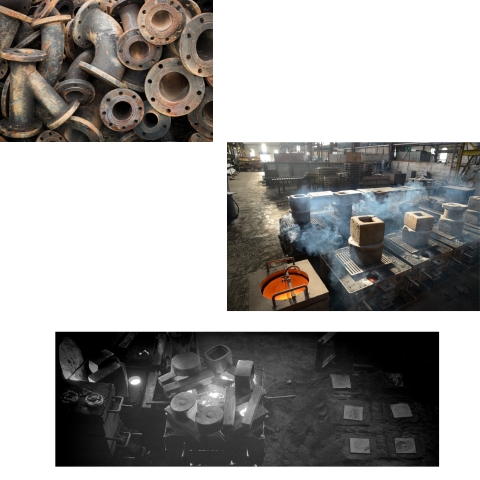Unveiling the Diversity of Cast Iron: A Comprehensive Guide to Types and Their Applications
-
Posted by
jaidi

Cast iron, a versatile material with a rich history, has found its way into various industries and households due to its exceptional properties. In this guide, we will explore the diverse types of cast iron and shed light on their unique characteristics and applications.
1. Gray Iron: The Workhorse of Cast Iron:
Gray iron, characterized by its gray appearance when fractured, is one of the most common types of cast iron. Its high carbon content gives it excellent strength, making it ideal for applications such as engine blocks, pipes, and cookware.
2. White Iron: Hard and Wear-Resistant:
White iron, distinguished by its white fractured surface, is known for its hardness and wear resistance. This type of cast iron is often used in applications where abrasion resistance is crucial, such as in the production of crusher plates and chutes in mining operations.
3. Ductile Iron: Combining Strength with Flexibility:
Ductile iron, also known as nodular or spheroidal graphite iron, has graphite nodules in its structure, giving it increased flexibility and toughness compared to gray iron. This type is commonly used in components requiring both strength and ductility, including automotive parts and pipes.
4. Malleable Iron: Versatility in Forming and Shaping:
Malleable iron undergoes a heat treatment process that imparts malleability and ductility to the material. This type is often preferred for components requiring intricate shapes, such as decorative ironwork, pipe fittings, and agricultural equipment.
5. Compacted Graphite Iron: Balancing Strength and Thermal Conductivity:
Compacted graphite iron, a hybrid between gray and ductile iron, exhibits a unique graphite structure that provides a balance between strength and thermal conductivity. It is commonly used in applications like cylinder heads and brake discs.
6. Alloyed Iron: Enhancing Performance with Additives:
Alloyed iron involves the addition of various elements such as nickel, chromium, and molybdenum to enhance specific properties. Alloyed cast iron finds applications in specialized industries, such as aerospace and automotive, where precise material properties are crucial.
7. Application Guide: Choosing the Right Type for the Job:
Selecting the appropriate type of cast iron for a particular application is essential. For instance, gray iron is excellent for applications requiring vibration damping, while white iron excels in high-wear environments. Ductile iron’s flexibility makes it suitable for components subjected to dynamic loads.
Conclusion:
In conclusion, the world of cast iron is rich and diverse, offering a range of materials tailored to various applications. Understanding the characteristics of each type allows engineers, manufacturers, and consumers to make informed decisions when selecting types of cast iron for a specific purpose. From the strength of gray iron to the wear resistance of white iron, each type plays a crucial role in shaping our modern world.

